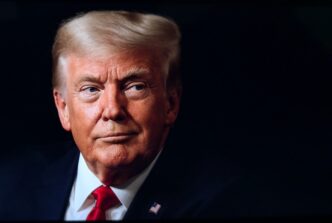WASHINGTON – The U.S. economy grew at a much stronger-than-expected pace in the second quarter, rebounding sharply from a winter contraction as a wild swing in trade, induced by the administration’s tariff policies, once again skewed the nation’s top-line economic figures.
The Commerce Department reported Wednesday that real gross domestic product (GDP), the broadest measure of goods and services produced, jumped at a 3% annualized rate for the April-through-June period. The figure easily topped economists’ estimates of 2.3% and marked a significant reversal from the 0.5% decline in the first quarter.
The robust headline number was powered by a massive drop in imports, which add to GDP, and a welcome return of consumer spending. However, the report also contained signs of a potential slowdown in underlying domestic demand, painting a complex and somewhat contradictory picture of an economy that remains resilient but is still navigating the profound uncertainty of a global trade war.
The report immediately drew a reaction from President Donald Trump, who seized on the strong growth to renew his public pressure campaign on the Federal Reserve, demanding that it lower interest rates to further stimulate the economy.
The Tariff Whiplash Effect
The second-quarter GDP figure cannot be understood without the context of the administration’s aggressive trade policies. The report’s key driver was a dramatic reversal in the trade balance. In the first quarter, imports had surged by a staggering 37.9% as businesses scrambled to stockpile goods from China and other countries ahead of President Trump’s April 2 “liberation day” tariff announcement. Because imports are a subtraction in the calculation of GDP, that surge was the primary reason the economy contracted in the first three months of the year.
The second-quarter report shows the other side of that coin. With inventories full and new tariffs in place, imports plunged by 30.3%. This massive drop, a direct consequence of the earlier stockpiling, provided a powerful, artificial boost to the GDP calculation. While exports also declined by 1.8% during the period, the collapse in imports was so large that it single-handedly powered much of the quarter’s growth.
This whiplash effect highlights the difficulty economists and policymakers face in trying to get a clear reading of the economy’s true health amidst the ongoing trade disputes. The headline numbers have become less a reflection of organic growth and more a measure of how businesses are reacting to the threat of new tariffs.
The Resilient Consumer and Ebbing Inflation
Beneath the trade distortions, the report contained genuinely positive news about the American consumer, whose spending accounts for roughly two-thirds of all economic activity. Consumer spending rose at a solid 1.4% pace in the second quarter, a significant improvement from the weak 0.5% growth in the prior period. This renewed strength suggests that despite concerns over trade and higher prices, households have remained willing and able to spend, providing a crucial pillar of support for the economy.
“The word of the summer for the economy is ‘resilient,’” said Heather Long, chief economist at Navy Federal Credit Union. “The consumer is hanging in there, but still on edge until the trade deals are done.”
The report also provided encouraging, though not definitive, news on the inflation front. The personal consumption expenditures (PCE) price index, the Federal Reserve’s preferred inflation metric, rose at a 2.1% rate for the quarter, just a hair above the central bank’s 2% target. More importantly, core PCE inflation, which strips out volatile food and energy prices, increased at a 2.5% pace. While these figures are still elevated, they represent a significant cooling from the first quarter, when they stood at 3.7% and 3.5%, respectively.
The Fed’s Dilemma and Trump’s Demands
The mixed data presents a complex challenge for the Federal Reserve. The central bank, which is meeting later on Wednesday, is widely expected to hold its key overnight borrowing rate steady in its current 4.25%-4.5% range. The strong headline GDP number and the still-above-target core inflation reading give the Fed justification to maintain its cautious, “wait-and-see” approach.
However, the report also contained warning signs that will give policymakers pause. A metric that the Fed watches closely as a pure indicator of domestic demand—final sales to private domestic purchasers—rose just 1.2%. This was down from the 1.9% increase in the first quarter and marked the slowest gain since the fourth quarter of 2022, suggesting that the underlying demand from consumers and businesses is softening.
Furthermore, the housing market, which is highly sensitive to interest rates, remains a significant weak spot. Residential investment fell by 4.6% in the second quarter, a clear sign that higher mortgage rates are continuing to weigh on the sector.
This nuance was lost on President Trump, who immediately used the strong headline number to amplify his attacks on the Fed and its chairman, Jerome Powell.
“2Q GDP JUST OUT: 3%, WAY BETTER THAN EXPECTED!” Trump posted on his Truth Social platform. Using his derisive nickname for the Fed Chair, the president added, “‘Too Late’ MUST NOW LOWER THE RATE. No Inflation! Let people buy, and refinance, their homes!”
Financial markets reacted with a shrug to the report, with stock index futures mixed and Treasury yields slightly higher. The muted reaction suggests that investors, like the Fed, are looking past the tariff-distorted headline number and are more focused on the subtle signs of a potential slowdown in underlying demand. The report, while positive on the surface, has done little to change the broader narrative of an economy that, while not in immediate danger, is walking a fine line between solid growth and the ever-present risks of a global trade conflict.








